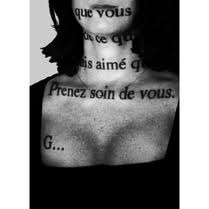1) What is photography’s “true genius”?
Throughout 170 years photography has served us, delighted
us, moved us, intrigued us and sometimes disappointed us by showing the secret
strangeness that lies beneath the world of appearance. It’s about what frame
you put around the image, what comes in and what is cut off, it tells its own story. Yet the story doesn’t
end, is told beyond the frame... That is the true genius of photography.
 |
| Andre Kertesz 1928 |
2) Name a proto-photographer.
Henry Fox Talbot was one
of the first proto-photographers. He was a British inventor of calotype process
who also experimented with paper covered by silver salts. He also contributed
to the concept of negatives and
positives (many positive copies can be made from negative).
Another
proto-photographer worthy of mention is Louise Daguerre who was using copper
plates to fix the images. A downside of this type of photography was that the
image could not be reproduced like a Polaroid picture.
3) In the 19th century, what term was associated with
the daguerreotype?
19th century term
refers to “A mirror with a memory”, which gives a very precise description as
to what daguerreotype is. Fixed images
were done on mirror metal plate and reflected a highly detailed picture with
impregnable sharpness. Tones of grey within the image and subject which seats
on the background creates a very unique visual experience, almost like a 3D
effect.
4) What is the vernacular?
Vernacular is a genre of
photography which refers to unknown or amateur photographers work. Its
subcategory contains journalistic, touristic, scientific photography. All media
such as postcards, snapshots, passport photos and every kind of photography used
except art. It contains some of photography’s greatest natural accuracy, a gift
of the media itself rather than the genius of the individual photographer.
5) How do you “Fix the Shadows”?
Henry Fox Talbot
experimented using chemistry, paper coated with silver salts and shoe box size
cameras, which were nicknamed mouse traps. All of his images were paper based.
Another photographer who found different way of fixing the shadows was Louis
Daguerre. Basically “Fix the Shadows” is the process of stopping a picture from
disappearing by overexposing to create permanent image.
6) What is the “carte de visite”?
It was a type of
photography which stood for the portraiture in 1854, patented by Andre Disderi.
A person was photographed 8 times in rapid sequence by a camera with multiple
lenses (8 poses in a space of few minutes). Cards were small and handy ie easy
to send by post. It has turned photography into a true industry.
7) Who was Nadar and why was he so successful?
Nadar (Gaspard-Félix
Tournachon) was a French celebrity photographer who photographed upper coming
stars in the style that has changed the rules of portratuire. He photographed
people as equals, they were standing in his daylight studio, plain background,
looking authentic and wonderful. That is why they are considered to be the best
portraits ever. Nadar had a specific way he looked at people. There was nothing
to indicate what was the background or profession of the photographed person.
It was the force of personality alone that was to convey the character of the
person.
8) What is pictorialism?
Pictorialism is the era
of an international style and aesthetic movement that dominated photography in
late 19th and early 20th century. It refers to the style
where the photographer deliberately manipulated the object to create this
imagined photograph. It was a little bit like painting, creating the image
rather than recording it.
































